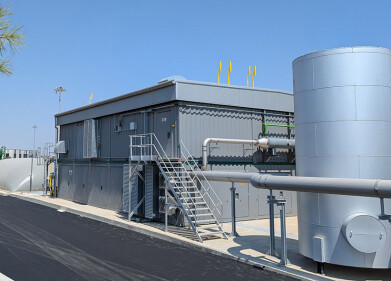Air clean up
How Bad Is India's Home Fuel Habit?
Feb 09 2018
According to the latest figures supplied by the World Health Organisation (WHO), 6.5 million people die prematurely from exposure to unsafe levels of air pollution every year. Over 92% of the global population live in areas which suffer from such pollution, with the rapid spread of urbanisation believed to be one of the main contributing factors to this statistic.
However, India represents something of an anomaly in this regard. Its population of 1.25 billion is largely rural, with roughly 66% of Indians living outside big cities and towns. That in itself is unusual in this day and age – but even more remarkable is the fact that country-dwellers are even more likely to die from air pollution causes than city slickers.
A pan-Indian problem
A new study published last month has found that in 2015, in excess of one million people died from causes related to inhaling unsafe air. 75% of those deaths were found to have occurred in rural areas, subverting the trend that urban centres are pollution hotspots and concluding that levels of particulate matter 2.5 (PM2.5) were approximately the same all across the country.
The reason? Over 300 million Indians are still without access to a proper source of electricity or an adequate fuel infrastructure. This means that countless rural residents must rely on hugely-polluting methods of energy generation to heat their homes and cook their meals, including combustion of cow dung, crop residue and wood.
Additionally, the outlawed but still widely adopted practice of stubble burning is thought to be a significant contributing factor to the toxic haze that settles over the northern parts of the country every winter. Indeed, the practice has even been blamed for excessive levels of pollution in neighbouring Pakistan of late.
The bigger picture
The authors of the report, who were based at the Indian Institute of Technology Bombay and the Health Effects Institute but included a panel of international observers, warned that if India does not clamp down on its damaging home fuel habit, the annual death toll could rise to 1.6 million by 2030. On the other hand, stamping out this primitive practice and bringing an end to crop burning could drastically reduce those susceptible to air quality-related diseases and afflictions. They estimate that it is currently within India’s power to reduce that death toll by 1.2 million per year before 2050.
As well as reducing the combustion of residential biomass, India must also explore sustainability in its mining efforts. At present, coal still comprises 56% of India’s total energy consumption, despite the fact that India has pledged to receive at least 40% of its electricity capacity from non-fossil fuel sources by 2030 as part of the Paris Agreement. Ambitious proposals to increase renewable capacity by 175GW before 2022 are underway, though still lack the kind of funding to make them truly feasible.
In any case, it’s clear that if India is to shed its terrible air quality reputation, it will take a concerted effort from governments, corporations and individuals to change their habits and plan for a cleaner tomorrow.
Events
May 18 2025 Algiers, Algeria
23rd International Water Management Exhibition
May 20 2025 Prague, Czech Republic
Jun 17 2025 Guangzhou, China
Singapore International Water Week Spotlight 2025
Jun 23 2025 Singapore
Jun 25 2025 Sao Paulo, Brasil














